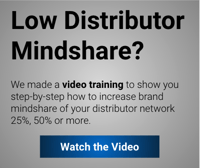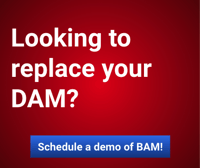In Search of Technology that Enables Sales Success
Sales enablement is on the rise – but what is it, exactly?
The definition of sales enablement is a bit of a moving target. Ask ten different marketing people what it means to them and you might get ten different answers!
Each company has its own perspective, and rightfully so. How you enable a sales team with technology will vary based on what you sell, how you sell it, and who does the selling. For any given sales organization, then, examples of sales enablement could include:
- Presentation-building software
- Sales and marketing document libraries
- Product comparison feature sets
- Product visualization and configuration tools
- Total Cost of Ownership (TCO) and other types of calculators
In this overview, we’ll take a look at how the term is variously defined to see where we might find some common ground, and ultimately come to a simple understanding of what is meant by “sales enablement.”
Perspectives on Sales Enablement
- Hubspot: “1. Processes, practices, technologies and tools that improve the performance and productivity of the sales organization. 2. Enhances ability of sales team to increase revenue via sales. 3. Drives revenue by directly impacting sales teams’ ability to close more deals.”
- IDC: “Getting the right information into the hands of the right sellers at the right time and place, and in the right format, to move a sales opportunity forward.”
- Pedowitz Group: “Aligning marketing processes and goals, and then arming sales with tools to improve sales execution and drive revenue.”
- Forrester: “Sales enablement is a strategic, ongoing process that equips all client-facing employees with the ability to consistently and systematically have a valuable conversation with the right set of customer stakeholders at each stage of the customer’s problem-solving life cycle to optimize the return of investment of the selling system.”
- Accent: “Sales enablement is the act of implementing strategies, tools and processes that continually increase the efficiency and effectiveness of your sales ecosystem.”
So, what is it really?
Sales enablement is the strategic, ongoing process of enabling sales teams with the content, guidance, and training they need to effectively engage buyers. Sales enablement analytics provide marketing and sales teams with data-driven insights to optimize business and drive revenue.
Placing a focus on sales enablement makes sales teams more effective by:
- Connecting sellers to the most relevant content for each buyer engagement
- Providing flexible ways to present content to customers
- Delivering real-time visibility into whether or not customers find content engaging
- Applying advanced analytics so pitches and content can be optimized
- Enabling sellers to get the training they need and measuring how effectively that training delivers bottom line results
Let’s break this definition down further and step through three defining principles of sales enablement.
Principle 1: Commit to a Sales Enablement Process
Establishing a process for sales enablement provides the necessary framework to begin coherently organizing, finding, sharing, customizing, and analyzing content. This process requires input from multiple teams, clear expectations, and a plan to execute on sales enablement goals. But remember — it shouldn’t be a one-and-done, set-in-stone strategy. As an ongoing process, your sales enablement plan should allow enough flexibility to evolve or pivot when you need. This agility will help you keep up with buyers’ changing needs and stay ahead of the competition.
Principle 2: Know and Involve Your Sales Team
If you think of the sales process as a funnel with four basic stages, the upper half is owned by marketing and is focused on generating interest in the company’s products and services. That part of the sales cycle has been transformed by the advent of marketing automation software, which allows companies to reach out to a broad audience and nurture leads until they are ready to be engaged by the sales team.
The lower half is primarily owned by sales, and is focused on closing deals and generating revenue. It is being transformed by sales enablement software, which equips the sellers with the tools, skills, and assets they need to engage effectively with buyers and drive the maximum amount of revenue for the company.
How do Sales Tools and Technology Create Value?
From these five definitions, some common themes appear that help us better understand sales enablement.
- The ultimate purpose of sales enablement is to increase sales revenue.
- Sales revenue is increased by improving sales team performance.
- Sales team performance is improved in multiple ways:
- Better alignment between sales & marketing
- Better tools to facilitate sales activities
- Better sales processes
Building Value for Your Sales Teams
As you can imagine, there are many different ways to accomplish the last three subpoints – hence why sales enablement can take such different forms under the same name. Training tools, analytics enhancements, CRMs, chat modules – as long as it meets the above criteria, it can still be considered sales enablement. This is why it’s so frequently said that everyone should be investing in sales enablement – it’s more about the ends than the means. Who doesn’t want more sales revenue?
Resources:
If you would like to learn more about our experience and perspective on mobile marketing and sales tools, please check out some of the resources below, or reach out on our contact page. We would be more than happy to share best practices that would help your sales teams to be more effective.


